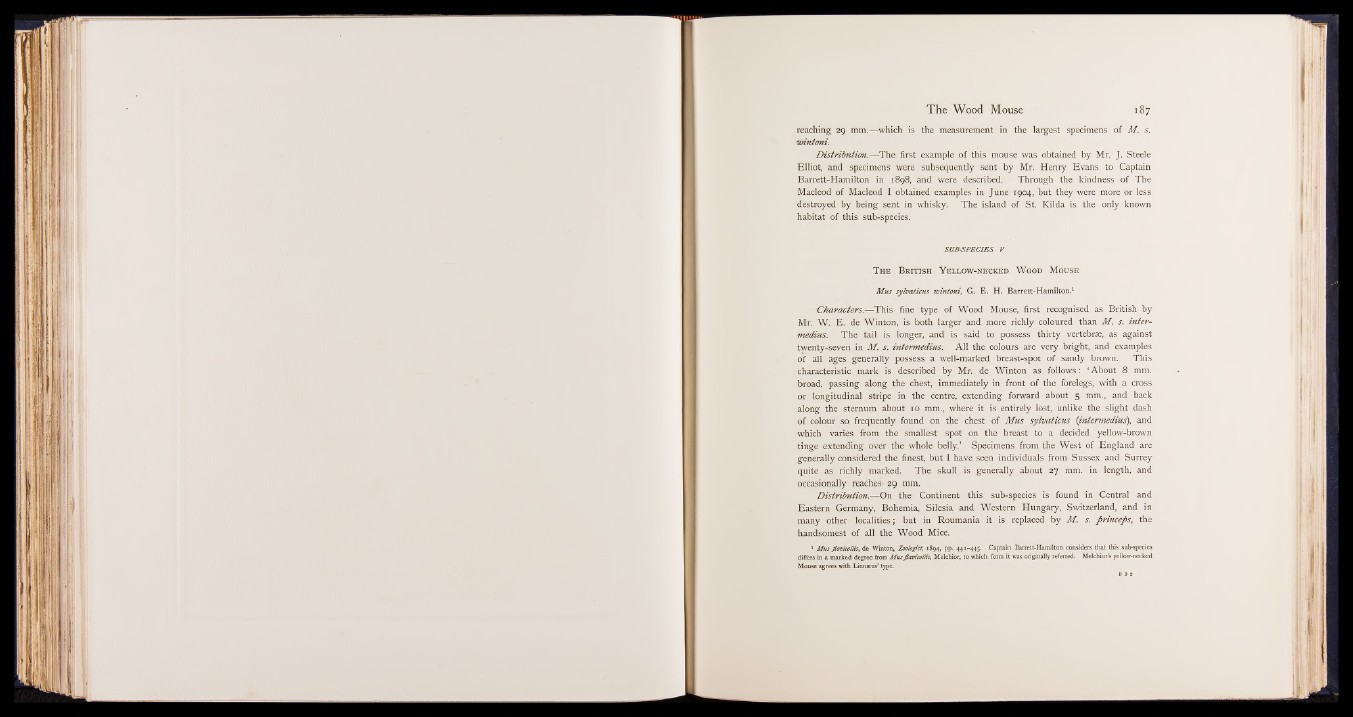
reaching 29 mm.—which is the measurement in the largest specimens of M. s.
•wintoni.
D istribution.—The first example of this mouse was obtained by Mr. J . Steele
Elliot, and specimens were subsequently sent by Mr. Henry Evans to Captain
Barrett-Hamilton in 1898, and were described. Through the kindness of The
Macleod of Macleod I obtained examples in June 1904, but they were more or less
destroyed by being sent in whisky. The island of St. Kilda is the only known
habitat of this sub-species.
SU B -SP E C IE S V
T h e B r i t i s h Y e l l o w - n e c k e d W o o d M o u s e
Mus sylvaticus wintoni, G . E . H . B a r re tt-H am ilto n .1
Characters.—This fine type of Wood Mouse, first recognised as British by
Mr. W. E. de Winton, is both larger and more richly coloured than M . s. intermedins.
The tail is longer, and is said to possess thirty vertebrae, as against
twenty-seven in M. s. intermedins. All the colours are very bright, and examples
of all ages generally possess a well-marked breast-spot of sandy brown. This
characteristic mark is described by Mr. de Winton as follows: * About 8 mm.
broad, passing along the chest, immediately in front of the forelegs, with a cross
or longitudinal stripe in the centre, extending forward about 5 mm., and back
along the sternum about 10 mm., where it is entirely lost, unlike the slight dash
of colour so frequently found on the chest of Mus sylvaticus (intermedins), and
which varies from the smallest spot on the breast to a decided yellow-brown
tinge extending over the whole belly.’ Specimens from the West of England are
generally considered the finest, but I have seen individuals from Sussex and Surrey
quite as richly marked. The skull is generally about 27 mm. in length, and
occasionally reaches» 29 mm.
D istribution.—On the Continent this sub-species is found in Central and
Eastern Germany, Bohemia, Silesia and Western Hungary, Switzerland, and in
many other localities; but in Roumania it is replaced by M. s. princeps, the
handsomest of all the Wood Mice.
1 Mus flavicollis, de Winton, Zoologist, 1894, pp. 441-445. Captain Barrett-Hamilton considers that this sub-species
differs in a marked degree from Mus flavicollis, Melchior, to which form it was originally referred. Melchior’s yellow-necked
Mouse agrees with Linnaeus’ type.